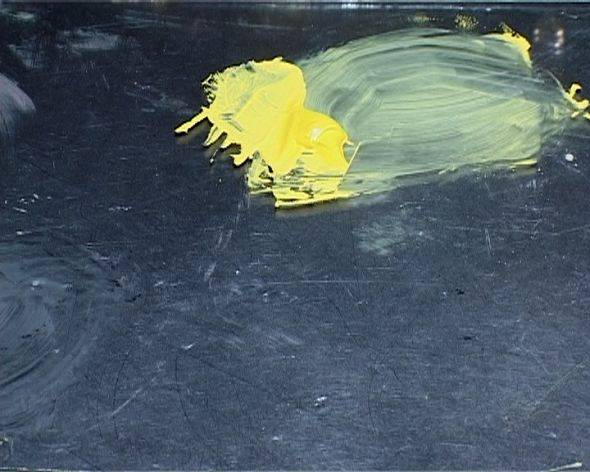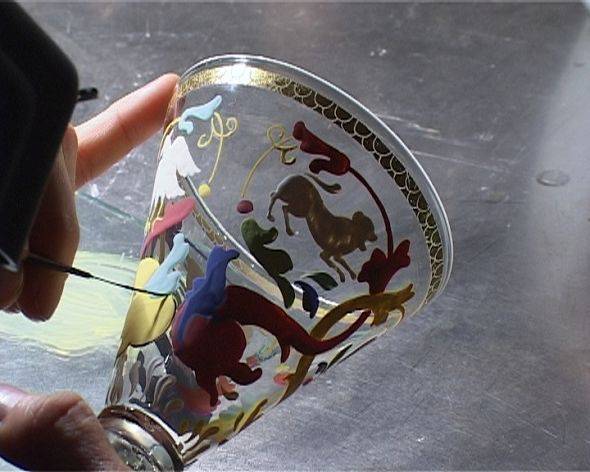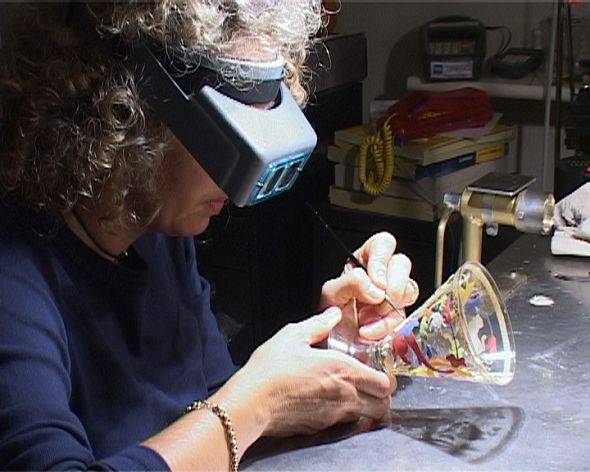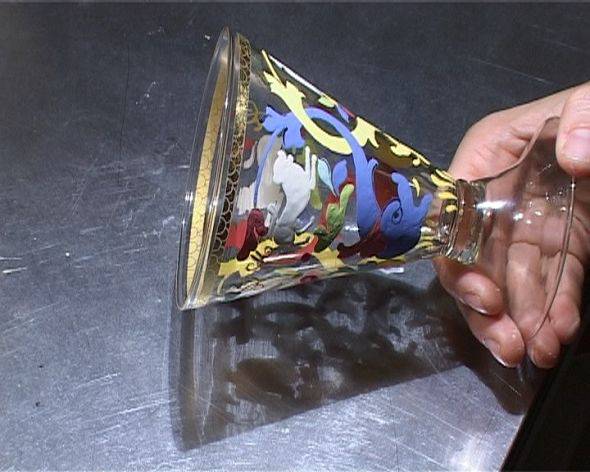Description
Enamel painting is one of the most widely used techniques over the centuries, though it requires specialised technical expertise. The first known examples were from the Roman period starting from the 1st century AD. Byzantine enamelled glass from the 10th to 11th century was also a refined example of this, as were the Islamic ones from the 13th to the 14th century. The technique was used in Venice from 1280 to 1350 circa, and then, from the 2nd half of the 15th century. From here it spread north of the Alps.
The painting consisted of the application with a brush of coloured mixtures obtained from finely ground powder of opaque or transparent glass with a low melting point mixed with an oily liquid. The decorated object is then placed in a muffle furnace at a temperature not higher than 600°C until the enamel softens and adheres indelibly to the wall of the support.
During the Renaissance and the Baroque period, high melting point enamels were used. Consequently, since a high temperature muffle furnace would have fused the object, it was necessary to slowly bring the glass to a working temperature, attaché them again to the pontil and anneal the enamels in the working furnace. For this reason, ancient enamelled blown objects have two superimposed pontil marks. The opening of plates and wide cups and the application of handles occurred during this phase. Finally, the object had to be annealed again in an annealing furnace.




